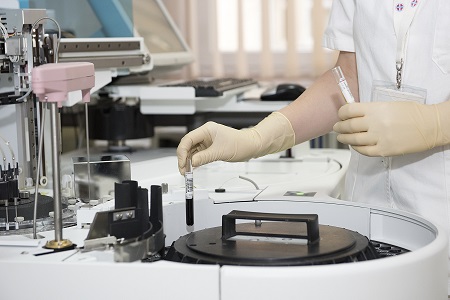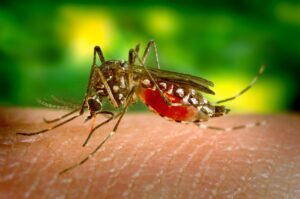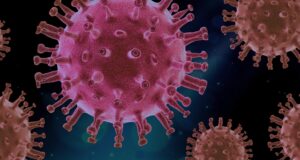Laboratory safety matters

Written by Divya Makhija, MSc in Biotechnology and edited by Dr. Subha Sarcar, PhD February, 18, 2019
Whether as a kid in high school/ undergrad or as an adult in college/University, we are always informed about the lab safety protocol by either the lab manager or the professor of the lab. Question remains, how many take this information/lesson seriously and implement in the lab?
Most of the time as beginners (sometime as an adult too), we are so excited to perform experiments (some are probably not that excited), we tend to forget/ignore about the “safety precaution measures. There are other instances as well, where as a beginner, we carefully work in a lab keeping in mind about all the safety measures explained earlier. But as one becomes senior and have been in the lab for few months/years, there tend to be lack of respect towards the safety protocols in the lab.
Are lab safety protocols too important to be followed? We should. Because, sometimes the risk associated with not adhering to the safety protocols are minor, but sometimes they can be major too. It should be, however, kept in mind that if a person is not following safety procedures then not only he/she is putting himself/herself at risk, but also putting everyone else working in the lab at risk, which can be a serious issue.
Since we are discussing about this topic, readers should also make a note that safety of a lab is not only dependent on the researchers working in the lab, but it also encompasses the technical staffs, and the manufacturers (supplying materials like chemicals, gas cylinders, biological cultures, etc.), which makes it a combined responsibility.
We will mention about a few examples, where lack of adherence to safety measures caused severe damage and even death in some cases.
BLAST IN LHSR, IISc, BANGALORE
On a fine day of December 5th, 2018, in the “Laboratory for Hypersonic and Shockwave Research”, (Super Wave Technology Pvt. Ltd.), four of the employees were working with “shock wave technology”. These men were setting up an experiment which was a part of the study related to applications of shockwaves, like fracking. One of the four men, named Manoj Kumar was involved with setting up a gas cylinder, which he had done many times before.
For reasons yet to be officially declared, a blast occurred. The effect of the blast was so severe that Manoj, who was closest to the gas cylinder, flew across the lab and died on impact. His other three colleagues, Atulya Kumar, Naresh Kumar and Karthik Sehnoy, were grievously injured. This incident raised several questions. Preliminary investigations ruled out sabotage. Also there was no fire, therefore the possibility of a short circuit as the reason, was bleak.
IISc’s internal investigation team reported that the blast occurred due to explosion of the gas cylinder which contained a mixture of highly inflammable hydrogen and oxygen gases. According to Dr. Jayaram, head of the internal investigation team, there were seemingly no lapse in safety precautions regarding storage or transport of gases.
Therefore, could it be something related to manufacture defect of the cylinder or did the researchers not take all the necessary safety measures, which were required in such setups? We are yet to find out answers to these questions. However, we cannot deny the fact that one wrong step can lead to something so severe.
DEATH OF SHERI SANGJI
A bright young girl, Sheri Sangji, was on her path to fulfill her dreams of becoming a scientist one day. Soon, she found herself getting hired as a research assistant in Dr. Harran’s chemistry lab, at UCLA. Her primary work was to set up equipments. Although she was very good at practical work, she was not formally trained for other tasks at UCLA.
On December 29th, 2008, when most of the people were out on holidays, Sheri decided to stay back in the lab along with Dr. Hurley, a post-doc in the lab. On that day, Sheri was assigned to transfer t-Butyl lithium, a pyrophoric agent.
Sheri was not wearing a lab coat while doing the work. The protocol used for transfer was in contrast to the one outlined by the manufacturer. The same protocol was being followed in the lab by the senior researchers and Sheri must have followed them. As a result, during multiple transfer of t-Butyl lithium, using the same syringe, something went wrong and the chemical got exposed. During this event Sheri caught fire. Since she wasn’t wearing a lab coat, her clothing immediately was on fire which resulted in Sheri suffering from serious burns. She passed away 18 days later.
DO NOT FORGET YOUR VACCINES!!
At San Francisco Veterans Affairs Medical Center, Richard Din, a research associate was working with meningitis. The specific strain he was working with, Neisseria meningitidis, is an extremely infectious agent. The researchers working with this bacterium are recommended to take vaccination against it by CDC (Center for Disease Control and Prevention).
Richard Din was that diligent fellow who followed all the safety procedures in a lab plus some more. He had, however, not taken his vaccination against Neisseria.
It was not clear from the investigations that how Richard got infected. On the evening of April 27, 2012, after leaving from work, Richard fell ill with flu-like symptoms and headache. The infection was so severe that by next morning he had developed a rash all over his body and died later in the day (at 2 p.m.) of heart attack.
Investigations by Occupational Safety and Health Administration (OSHA) revealed three violations of safety at the research center. A statement was issued that even if Richard would have taken vaccination, it wouldn’t have helped him because this was a strong virulent strain of Neisseria.
Here, who was at fault shall we say? The researcher who didn’t take the vaccination which may or may not have helped him? Or the employer who should have ensured that all safety practices are being followed and researchers are aware of results of violations?
From all the above incidents/examples, it becomes very clear that it is essential to follow all the safety precautions at all the times to avoid occurrence of a serious accident. Not following some rules is considered to be “cool” by some people, but one need to think whether it is really worth it.
You can check out some great resources on lab safety here, here and here.
About Author: Divya Makhija, MSc in Biotechnology, has joined internship program with us. She is interested in pursuit of scientific research and science communication and she is very self-driven for the same.








